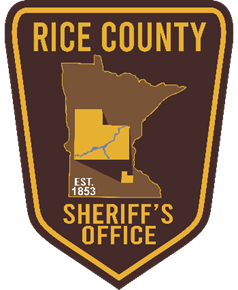The CERT course will benefit any citizen who takes it. Trained individuals will be better prepared to respond to and cope with the aftermath of a disaster. The initial CERT course consists of 27 hours of training, conducted over multiple weeknights and weekends. Classes are taught by trained emergency personnel, including firefighters, law enforcement officers, paramedics and Emergency Management professionals. Upon completion of the course, the participants will be able to:
- Describe the function of CERT and their role in immediate response.
- Describe the types of hazards that are most likely to affect their homes and community.
- Take steps to prepare themselves for a disaster.
- While working as a team, apply basic fire suppression strategies, resources, and safety measures to extinguish a burning liquid.
- Apply techniques for opening airways, controlling bleeding and treating for shock.
- Perform head to toe assessments.
- Select and set up a treatment area.
- Employ basic treatments for various wounds, and apply splints to suspected fractures and sprains.
- Identify planning and size up requirements for potential search and rescue situations.
- Use safe techniques for debris removal and victim extrication.
The training is not designed to enable civilians to respond to a disaster with the ability of professional emergency personnel. Rather, it teaches greater self-sufficiency and optimizes chances of survival. CERT volunteers do NOT:
- Suppress large fires.
- Enter structures that they consider heavily damaged and dangerous.
- Perform hazardous materials materials cleanup or respond to incidents involving radiological, chemical, or biological agents.
- Perform medical, fire, or search and rescue operations beyond their level of training.
In addition, CERT volunteers are brought together bi-annually for drills/training sessions to meet, work, and train together. Awareness, commitment, and skills must be repeatedly practiced to maintain the greatest level of response for our community and safety to our members.
“Introduction to Community Emergency Response Teams”, IS- 317, is an independent study course that serves as an introduction to CERT for those wanting to complete training or as a refresher for current team members. It has six modules with topics that include an Introduction to CERT, Fire Safety, Hazardous Material and Terrorist Incidents, Disaster Medical Operations, and Search and Rescue. It takes between six and eight hours to complete the course. The IS-317 can be taken by anyone interested in CERT. However, to become a CERT volunteer, one must complete the classroom training offered locally.
Waseca County CERT Training Course
Class 1 describes the types of hazards most likely to affect our homes and community, the functions of CERT and our role in immediate response, and identify the steps to prepare for disasters. Volunteers learn how to reduce hazards where possible in the home and the workplace, how to turn off utilities, develop a disaster plan and supply kit, and what role CERT has in the community.
Class 2 outlines basic fire suppression techniques to include size-up, fire chemistry, fire extinguisher types and usage, hazard materials, utility control, and teamwork. Participants will practice the use of fire extinguishers.
Class 3 begins disaster medical operations with recognition and treatment of life threatening emergencies: airway obstruction, bleeding, and shock. Volunteers learn the principles of triage, transportation, and treatment area management. Volunteers will practice recognition and treatment techniques.
Class 4 is a part II of medical operations. Volunteers learn and practice head-to-toe evaluations, splinting, wraps and wound care, along with recognition and treatment of non-life-threatening injuries. Public health considerations of sanitation, hygiene and water purification are also included.
Class 5 is about Search and Rescue; how to size up the situation in which the search and rescue teams will operate, how to search systematically for disaster victims, and safe techniques for lifting, leveraging, cribbing, and victim removal. Heavy emphasis is placed on recognizing rescue limitations and rescuer safety.
Class 6 discusses CERT organization; how to organize and deploy volunteer resources, rescuer safety, and documentation. The NIMS (National Incident Management System) command system is introduced stressing the need for teamwork, organization, and logistical planning.
Class 7 prepares members for the psychological impact of a disaster on rescuers and victims, how to provide “psychological first aid” before, immediately following, and after a disaster.
Class 8 discusses terrorism, terrorist goals and weapons, cues that help identify a terrorist attack has occurred, CERT protocols for terrorist incidents and protective action following an event.
Class 9 is a course review and simulated disaster drill. Participants will apply the principles and skills they have learned to a disaster situation. A debriefing and graduation celebrating successes follows concludes the course.
